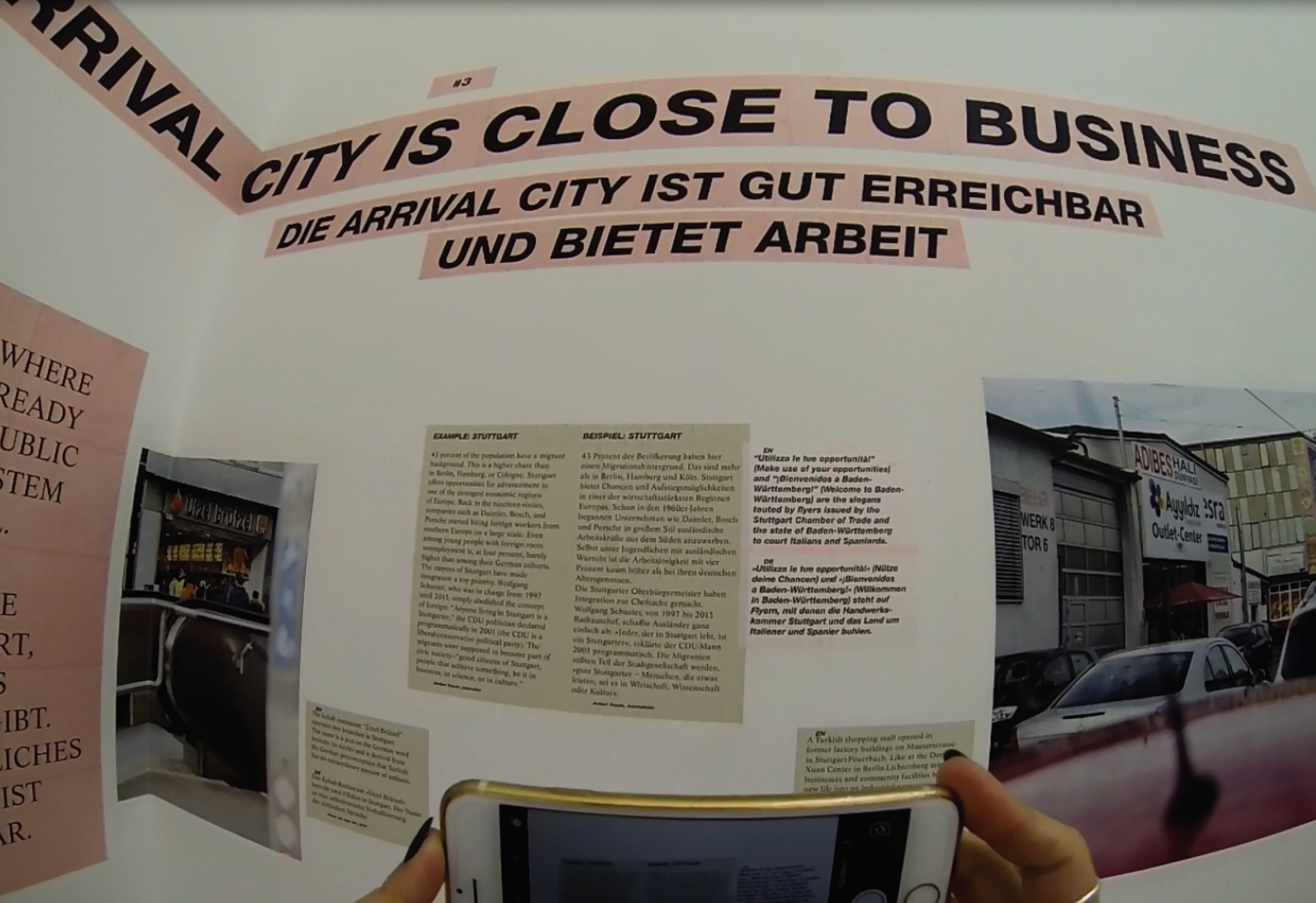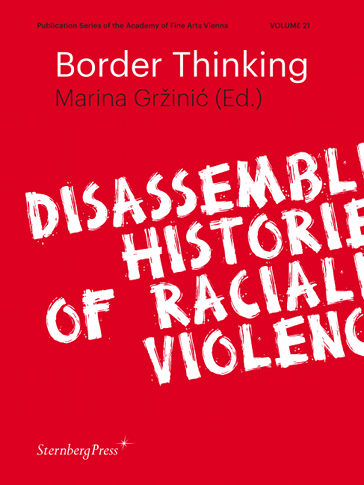RESSOURCE: IMMIGRATION?

RESSOURCE: IMMIGRATION? tries to formulate a link to older works of mine on asylum politics, tracing the connections and posing questions on a historical, political and ideological level. It relates directly to the topic of the 15th Biennial of Architecture in Venice in 2016.
RESSOURCE: IMMIGRATION? tries to analyze in several stages how architecture, city planning and art can be viewed in terms of migration and refugees. The main aspect deals with exterior regimes of the gaze. The gaze as criticism can never be neutral because there is a doublings involved. The words of criticism and crisis have the same language roots, leading to a kind of a change, where you can state: crisis in post-democracy, crisis in art, but also interior crisis within criticism itself.
The 15th Biennial of Architecture in Venice central topic carried the title Reporting from the Front and it is remarkable how many of the pavilions did not have any discussion-related contributions. On that occasion it was clearly exposed that architecture is only related to architecture and that there is all about nation’s self-representation and self-appraisal.
Germany and Austria’s pavilions are taken as special examples in my work in order to read the coordinates and regimes of the gaze. They offer the same reproductions of those kind of “best-practice examples,” which always in the end produces a debate on positivism and thus become apolitical. Without acknowledging the reasons for migration or having critical reflections, several forms of participating projects offered solutions that however couldn’t work in the long run.
Such highly problematic solutions have been on view now for a couple of years, especially since the refugee demonstrations in 2012, when issues of migration became relevant also in the media; not only in Austria but also in other European countries through visual arts and in theater, groups of people got objectivized and homogenized. Mostly the works are simplified and reduced to statistics and mappings, until an almost theatrical staging. Colonialism and coloniality, that is a much subtle and that spreads internationally, have not been reflected not as part of the social nor artistic agenda in post-democratic, neoliberal and global capitalist countries.
The overproduction of exhibitions and projects try to reach a common platform in order to meet with migrants and refugees, which cannot be reached that easily because of their un-status, un-visibility and class differences. The capitalist structures, which reduce people to numbers inside the legal-administrative system is therefore not only repeated in German’s asylum politics, but also in the German Pavilion at the 15th Biennial of Architecture in Venice.
The Syrian Pavilion could be excused.
The Austrian Pavilion took care of these phenomena.
RESSOURCE: IMMIGRATION? – work in progress, 2016/2017.
Video sequences and photos from the 15th Biennial of Architecture in Venice by Betül Seyma Küpel

BORDER THINKING.
Border Thinking: Disassembling Histories of Racialized Violence aims to question and provide answers to current border issues in Europe. Central to this investigation is a refugee crisis that is primarily a crisis of global Western capitalism and its components: modernization, nationalism, structural racism, dispossession, and social, political, and economic violence.
